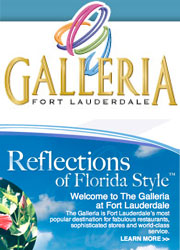With seven miles of shoreline, 300 miles of canal coastline, a flat topography, and shallow, porous aquifer, Fort Lauderdale is vulnerable to the effects of climate change and sea level rise. Flooding in low-lying areas is more likely when the close proximity of the moon, higher than average tides called King Tides, rising sea levels, and inclement weather conditions combine to exacerbate flooding risks. Rainfall and wind strength and direction can have a significant impact on the height of the tides causing them to come in higher or lower than predicted. Also note that high water tables (groundwater level) due to rain events can raise the probability of localized flooding.
Anticipated King Tides in 2020
- September 16 - 22
- October 14 - 21
- November 13 - 18
- December 13 - 15
What the City is Doing to Prepare
The City is actively planning for High Tides and King Tides in the short term; and sea level rise in the long term. The following lists provide an overview of steps the City will take, depending on existing conditions, to mitigate localized flooding. Visit our Green Your Routine portal for more information on the proactive measures Fort Lauderdale is taking to strengthen community resilience. Review the Commission Conference presentation to see how our investments are succeeding in creating a safer and stronger community.
City Steps to Address High Tides and King Tides
- Conduct inspections and cleaning of tidal valves already installed throughout the City to confirm they are operating properly and mitigating tidal flooding as expected
- Check and clean stormdrains and catch basins to remove any blockages to facilitate drainage and minimize water accumulation
- Monitor pump stations to ensure the stormwater system is operating efficiently
- Coordinate investigations into reported flooding through the 24-Hour Customer Service Center
- Expedite tidal valve installation, when possible, to prevent tidal water from backing up in the stormdrain system and flooding City streets
- Bury seaweed in the sand to stabilize the beach up to a certain threshold of wave impact
- Place “No Wake” signs on roadways to encourage drivers to proceed slowly through neighborhoods to prevent additional damage
- Place barricades and lane delineators near waterways to protect swales and prevent vehicles from driving off the road into the adjacent waterway
- Disseminate external information to advise neighbors of high tides and advise of appropriate safety precautions to protect life and property
- In the event of significant flooding, the City may use vacuum trucks to remove ponding water remaining at low tide from streets to keep them safe and drivable
- Deploy equipment or create temporary berms, depending on field conditions, that act as barriers to protect low or non-existent seawalls from encroaching waterways
- Reach out to local government agencies to raise awareness of flooding on State and County roads that are located in Fort Lauderdale, but out of the City's jurisdiction
- Implement temporary road closures on flooded streets as a precautionary safety measure
City Steps to Address Sea-Level Rise
- Included measures to address sea-level rise in the citywide Vision Plan, Sustainability Action Plan, Five-year Strategic Plan, Commission Annual Action Plan, and Community Investment Plan
- Established a Sustainability Division to identify key issues and implement citywide strategies to build community resilience
- Developed a robust stormwater master plan with aggressive maintenance targets to maximize our infrastructure and reduce the threat of flooding
- Drafting a Seawall Master Plan and identifying priority recommendations for seawall repair and replacement
- Installed 177 tidal valves
- Installed a tide gauge on the New River to get accurate local tide measurement to make more informed decisions
- Constructed a berm on the south side of Las Olas between Lido and San Marco Drive to reduce flooding
- Created a Floodplain Manager and a Stormwater Manager position to coordinate resources and implement long-term initiatives to minimize our vulnerabilities and strengthen our community
- Adopted new Flood Insurance Rate Maps and updated the floodplain ordinance to establish higher regulatory standards for future development to minimize vulnerability to flooding
- Adopted an Adaptation Action Area (AAA) policy to help prioritize funding for adaptation measures and infrastructure improvements in an effort to reduce vulnerabilities in areas that are threatened by sea-level rise and coastal flooding
- Identified 17 AAAs and funding for 42 projects to date, as stated in the 2018 Community Investment Plan
- Amended the seawall ordinance in an effort to protect properties and minimize flooding caused by breached seawalls
- Installing a blend of permeable pavers, bioswales, and exfiltration trenches to maximize water retention and the capacity of the storm drain system to minimize localized flooding
- Created an Infrastructure Task Force to help prioritize City infrastructure needs and recommend funding methods
- Raising electrical panel boxes for sanitary sewer pump stations to prevent power outages
- Incorporating sea level rise as planning criteria for infrastructure improvements
- Working with Broward County to renourish the beach to mitigate wave impacts
- Participating in the Southeast Florida Regional Climate Change Compact to engage in a regional approach to foster sustainability and climate resilience by implementing mitigation and adaptation initiatives
- Seeking and maintaining global partnerships and innovative solutions. The rebuilding of A1A is a great example of how the City worked with residents, the Florida Department of Transportation, Broward County, and the Metropolitan Planning Organization (MPO), to rebuild A1A with greater protection and at a higher elevation to be more resilient in the event of a future storm, high tide, and rising sea-levels.
How Neighbors Can Prepare
Neighbors are advised to be vigilant during High Tides and “King Tides.” Please take the time to review important safety tips, evaluate your property's readiness, and review your flood insurance policy.
During high tides, neighbors are reminded to closely monitor their waste carts, and to remove them from the street as quickly as possible after they are emptied. If your street floods, you may want to store your sanitation carts in a safe and secure location until your next regularly scheduled collection day. View the sanitation service tips page for more information.
Property Protection
Precautions you can take to protect your property from damage and reduce financial losses include:
- Regrading your lot (permit may be required),
- Fixing property drainage problems,
- Constructing barriers, such as a floodwall to stop floodwater from entering the building,
- Relocating electrical panel boxes, furnaces, water heaters, and washers and dryers to elevated locations,
- Installing check valves to prevent floodwater from backing up in drains,
- Installing storm shutters, impact windows, and a reinforced garage door.
- The City responds to flood protection inquiries. If you have a question regarding flood, sewer or drainage problems, contact the City of Fort Lauderdale 24-Hour Customer Service Center at 954-828-8000.
How Neighbors Can Stay Safe
- Avoid walking through flood waters, it is dangerous and can be a health hazard
- Avoid driving through flooded areas, turn around and find another way; in addition to being a threat to life safety, the salt water can lead to both short and long term damage to your vehicle
- Follow posted road closure and detour signs
- If you drive through flooded areas, please note that creating waves can cause additional damage to surrounding landscaping and property
- Be careful around manhole covers, as they can become dislodged by the high tides
- Boaters are advised that high tides cause lower clearance under fixed bridges, check the tides before leaving the dock
Review additional information flood insurance rate maps, coastal high hazard areas, property flood depths, natural conservation areas and wetlands, flood insurance, and floodplain management regulations.
Click here to request a Flood Risk Information Letter for your property.
What is a Tide?
The word “tide” is a generic term used to define the rise and fall of sea level with respect to land. Tides are influenced by the gravitational attraction of the moon and sun. In addition, tides are affected by other factors such as: coastline configuration, local water depth, wind, and weather conditions. Twice a day, tides peak to a high and low water level, commonly referred to as “high tide” and “low tide.”
Knowledge of the tide times and predicted heights are important to various applications such as: emergency preparedness; maritime navigation; the construction of bridges, docks, and seawalls; and the operation of wastewater and storm water collection systems. Tide information is indispensable to the fishing, boating, surfing, and other water-related industries. Currently, this information is critical to understanding flooding which impacts the City during weather events, particularly in low-lying areas.
Tide Predictions
Tide predictions can differ from the actual sea level rise or fall that occurs. Predicted tidal heights are those expected during average weather conditions. When weather conditions differ from what is considered average, water levels can be significantly altered. Generally, prolonged onshore winds (wind towards the land) or low barometric pressure can produce higher sea levels than predicted, while offshore winds (wind away from the land) and high barometric pressure can result in lower sea levels than predicted.
High tides are produced from the flow of water toward positions on Earth where the gravitational forces of the sun and moon are the strongest. Low tides are created at a point midway between the two positions. The alternating between high and low tides is caused by the daily rotation of the Earth. There are peak high tides in each month. Typically the City of Fort Lauderdale experiences its highest tides during the months of September, October, and November.
These high tides may cause ocean and canal waters to rise above elevations of land, including streets and seawalls in low-lying areas of Fort Lauderdale and throughout South Florida, thus causing tidal flooding of those areas.
The City’s installation of more than 60 tidal valves in flood-prone neighborhoods to date has reduced the impact of high tides in those locations. Onshore winds can exacerbate coastal flooding and concurrent rain events may increase incidences of flooding further inland as the high tides impede drainage.
In addition, to reduce flooding from tides and rains, the City is currently implementing its Stormwater Master Plan to improve system operation and reduce flooding incidence through means including additional one-way tidal valves, Tiger Dams, sand berms, bioswales, pervious pavers, stormwater preserves, improved pumping stations, and seawall repairs.
Know Your Flood Zone
- To determine the flood zone for your property, use the GIS Application on the City website, or complete the “Flood Zone Request” form on the City website, or call the City’s floodplain manager, Richard Benton at 954-828-6133. Knowing the f lood zone for your property can help neighbors better understand their vulnerability to flooding.
Insure Your Property
- Homeowner and renter insurance policies usually do not cover flood damage. The City of Fort Lauderdale encourages neighbors who rent or own property in a Special Flood Hazard Area to purchase flood insurance to protect their home and possessions against loss from flood damage.
Protect Your Property
- Neighbors that drive through tidally flooded streets should consider taking their vehicles through a car wash equipped with an undercarriage sprayer to remove the saltwater.
- The City responds to flood protection inquiries. If you have a question regarding flood, sewer or drainage problems, contact the City of Fort Lauderdale’s 24-Hour Neighbor Service Center at 954-828-8000.
Build Responsibly
- Prior to starting any construction, residents or builders should contact the City’s Department of Sustainable Development at 954-828-6520 to ask about required permits.
- State law prohibits dumping anything into the storm drain system and unauthorized obstructions or alterations of the drainage features. Residents should report illegal dumping into the stormwater system or clogged storm drains by calling the City of Fort Lauderdale 24-Hour Customer Service Center at 954-828-8000.
Flood Safety
Flood insurance will help recover losses from flood damage, but additional precautionary measures can be taken to minimize those losses and protect yourself, your family and your property.
Before a Flood
- Make sure you are covered. Ask your insurance agent about the NFIP and flood insurance.
- Prepare a family disaster plan and a disaster supply kit.
- Know the City’s flood warning procedures and local evacuation routes.
- Know how to turn off your utilities. Contact your local utility company now if you are not sure how to do so.
- Bring outdoor belongings in and move your valuable possessions to higher ground.
- Keep materials such as sandbags, plastic or burlap bags, plywood, plastic sheeting, lumber and shovels handy for emergency waterproofing.
During a Flood
- Use a battery-operated NOAA weather radio to monitor emergency information.
- Fill containers with clean water in case drinking water becomes contaminated.
- If instructed to do so by local authorities, turn off all utilities at the main power switch, close the main gas valve and shut off propane tanks.
- If instructed to evacuate by authorities, do so immediately. Follow evacuation routes.
- Do not walk or swim in floodwaters. If you must walk in standing water, use a pole or stick to check water depths.
- Do not drive through a flooded area; turn around and find another way. Never drive around roadblocks.
- Avoid power lines and electrical wires. Electrical current can travel through water.
After a Flood
- Report downed power lines to FPL at 800-4-OUTAGE; use the Lauderserv app; or call the City of Fort Lauderdale 24-Hour Customer Service Center at 954-828-8000.
- If an evacuation order was issued, do not return home until authorities announce it is safe to do so.
- Use caution when entering buildings. If your property was flooded, inspect it for damages.
- Check for gas leaks. Do not smoke or use candles unless you know the gas has been turned off.
- Do not use wet appliances. Appliances can keep a charge even after unplugged.
- Take pictures of damage to your home and belongings for insurance claims.
Drainage System Maintenance
The City of Fort Lauderdale has a system of natural and man-made drainage features that manage local water flow and stormwater runoff. These features include rivers, canals, storm drains, catch basins, pump stations and swales. The local canals and rivers help prevent flooding, as well as recharge the well fields that supply the City’s drinking water.
The City’s storm drain system carries water from rain, hoses and sprinklers to our waterways. This water picks up pollutants such as debris, cigarette butts, motor oil, yard and pet waste, and pesticides that contribute to stormwater pollution. Stormwater is untreated water, which means, whatever flows into a storm drain exits to the waterways.
Residents can help prevent flooding and stormwater pollution by:
- Keeping pollutants or chemicals out of the storm drains,
- Keeping swales, yards and other surfaces clear of debris so that water can drain into the soil rather than running off and causing flooding,
- Removing debris from nearby storm drains so water may flow freely into them,
- Landscaping with native, drought-friendly plants that absorb water and require little or no fertilizer.
State law prohibits dumping anything into the storm drain system and unauthorized obstructions or alterations of the drainage features. Residents should report illegal dumping into the stormwater system or clogged storm drains by calling the City of Fort Lauderdale 24-Hour Customer Service Center at 954-828-8000.






















